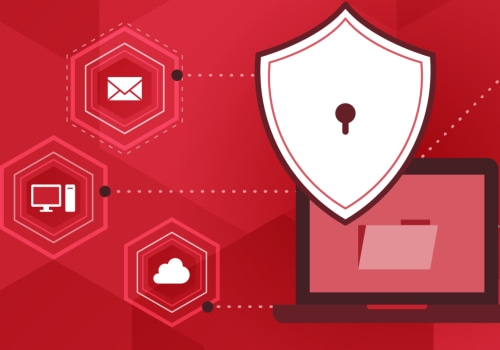IT security audits are becoming increasingly important in today's digital world. Companies must have a comprehensive risk management plan in place to ensure that their systems and data are secure from potential threats. Creating a risk management plan is not a simple task; it requires detailed knowledge of IT security best practices and the ability to identify and mitigate risks. This article will provide an overview of the steps involved in creating a risk management plan for an IT security audit and how it can help protect your organization.
Begin by understanding the audit process.
An IT security audit is an assessment of the organization’s security posture and should include an in-depth review of current systems, processes, and controls.The auditor should be able to identify any vulnerabilities or areas of non-compliance and develop a comprehensive plan for addressing these issues. Once you understand the audit process, it is important to understand the principles of risk management. Risk management involves assessing and prioritizing potential risks, developing strategies to mitigate or reduce those risks, and implementing those strategies in order to reduce the impact of any potential threats.
The next step is to create a risk management plan.
The plan should include an overview of the organization’s security posture, including any vulnerabilities or non-compliance issues identified during the audit.It should also include policies and procedures for addressing those issues, as well as steps for implementing those policies and procedures. When creating a risk management plan, it is important to consider the following:
- Identify potential risks: This includes identifying any potential threats or vulnerabilities that could impact the organization’s security posture.
- Develop policies and procedures: This includes developing policies and procedures for mitigating any identified risks, as well as procedures for monitoring and evaluating those policies and procedures.
- Implement the plan: Once the policies and procedures are in place, it is important to ensure that they are implemented correctly and consistently. This includes training employees on how to adhere to the policies and procedures, as well as monitoring compliance with those policies.
Risk Management Principles
Risk management is a process of identifying, analyzing, and responding to risks associated with an organization’s activities.It is important to understand the principles of risk management in order to create an effective risk management plan. The key principles of risk management include: Identification: Identifying potential risks before they occur is essential for effective risk management. This involves identifying the sources of risk, analyzing the likelihood of their occurrence, and assessing the potential impact on the organization.
Analysis: Once potential risks have been identified, they must be analyzed in detail in order to understand the scope and severity of the risk.
This involves collecting data and making informed decisions on how to respond to each risk.
Mitigation: After risks have been identified and analyzed, organizations must put processes in place to mitigate these risks. This can include setting up policies and procedures to reduce the impact of any potential threats or implementing technological solutions to protect against cyber-attacks.
Monitoring: Organizations must also monitor the risk management plan on an ongoing basis in order to ensure that it remains effective and up-to-date.
This includes monitoring for changes in the environment that could affect the risk assessment, as well as assessing the effectiveness of existing measures.
Steps for Creating a Plan
Step 1: Assess the Risk Level and ImpactThe first step in creating a risk management plan is to assess the risk level and impact of potential threats. This includes identifying the types of threats that may affect your organization and assessing the potential damage they could cause. To help you in this process, you should consult with industry experts and use available security tools to get an accurate assessment of the risks.Step 2: Develop Policies and Procedures
Once you have assessed the risk level and impact, the next step is to create policies and procedures to mitigate those risks.This includes setting up access control measures, such as encryption and authentication, as well as implementing procedures for responding to security incidents. It’s important to ensure that these policies are communicated to all employees, so everyone is aware of their responsibilities.
Step 3: Implement Effective Monitoring and Response
Once you have established policies and procedures, it’s important to implement effective monitoring and response measures. This includes using tools such as intrusion detection systems, firewalls, and antivirus software to detect potential threats. You should also create a response plan for dealing with security incidents as soon as possible.Step 4: Evaluate Your Plan Regularly
It’s important to regularly evaluate your risk management plan to make sure it is effective in mitigating risks.This includes monitoring the performance of your security measures and reviewing your policies and procedures on a regular basis. By doing this, you can ensure that your plan is up-to-date and effective.
Overview of the Audit Process
Risk management plan preparation is an important part of any IT security audit. It is critical to understand the audit process in order to create an effective risk management plan. An audit process involves evaluating the IT system to identify potential risks, analyzing the data to determine the risk level, and setting policies and procedures to mitigate any risks that have been identified.The audit process typically begins with a discovery phase, during which the auditors review the system and make sure that it meets the requirements of the organization’s IT security policies. This phase also involves gathering information about any changes that may have been made to the system since the last audit. Once the initial discovery is complete, the auditors will then move into a data collection phase where they collect data from various sources such as logs, user accounts, and system configurations. This data is then analyzed to assess potential risks and identify areas of improvement.
The next step in the process is to develop a risk management plan that outlines the steps necessary to mitigate any risks that have been identified. This plan should include policies and procedures for responding to security incidents, as well as mitigation measures for reducing the impact of any potential threats. Once the risk management plan has been developed, it should be tested to ensure that it is comprehensive and effective. Creating an effective risk management plan requires a thorough understanding of the audit process and how it can help identify potential risks.
It is essential to develop a comprehensive plan that outlines policies and procedures for mitigating any risks that are identified. The risk management plan should also be tested regularly to ensure that it is effective in reducing the impact of any potential threats. Creating a comprehensive risk management plan is essential for organizations that want to ensure their IT systems are secure and compliant. By understanding the principles of risk management, the audit process, and taking the necessary steps to create a plan, organizations can reduce the impact of potential threats and ensure that their data remains secure.








Leave Message